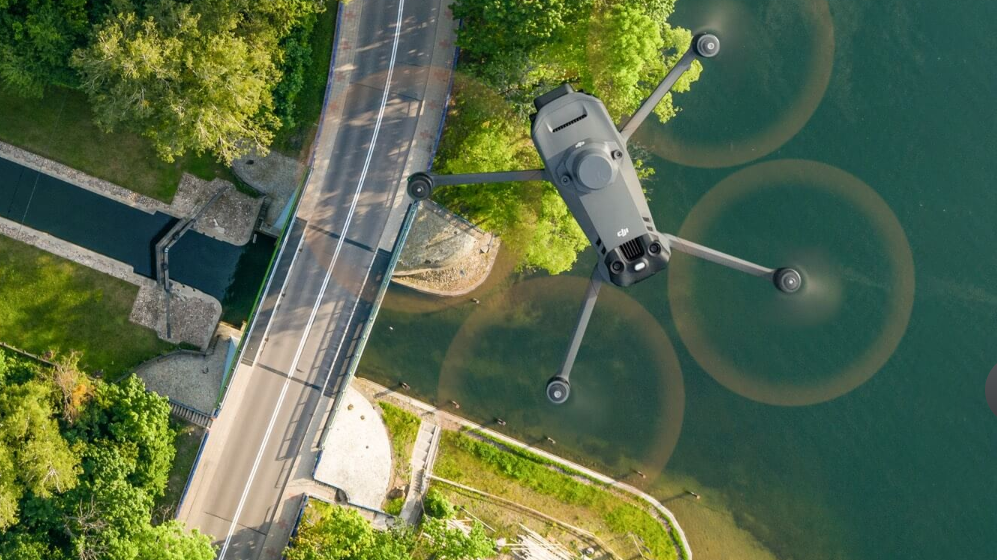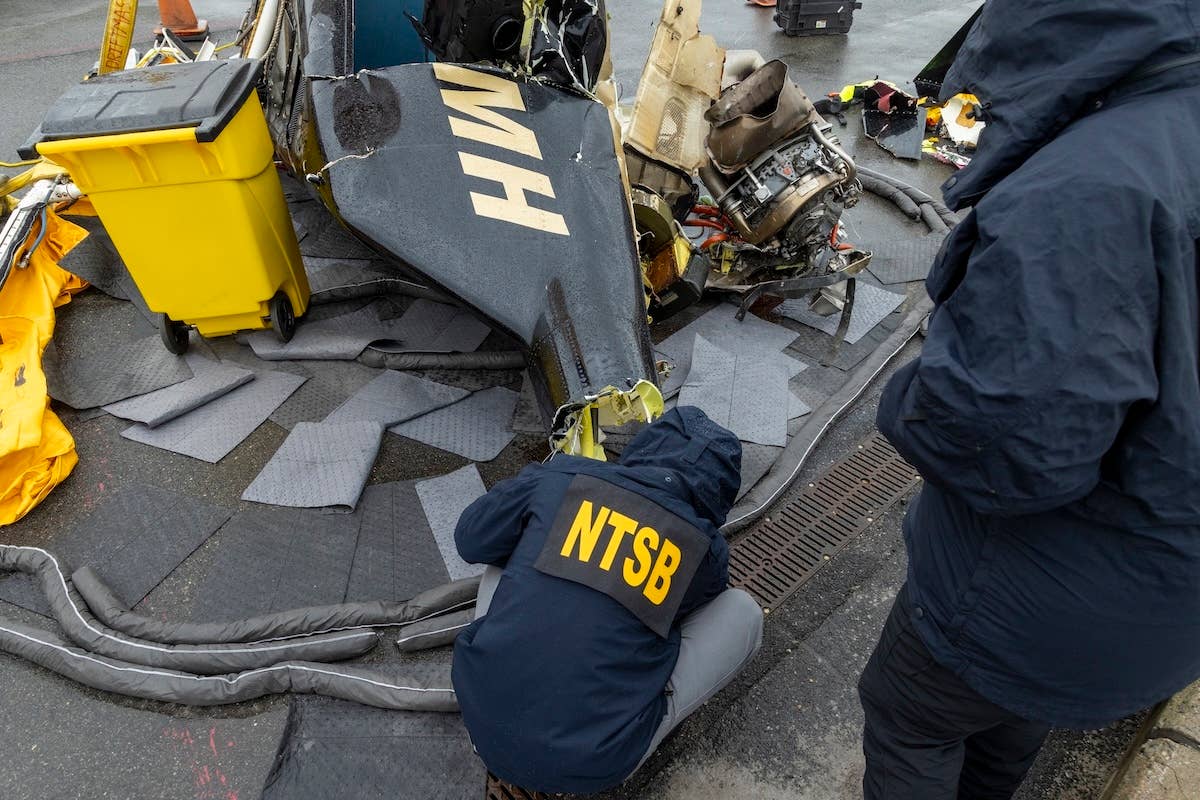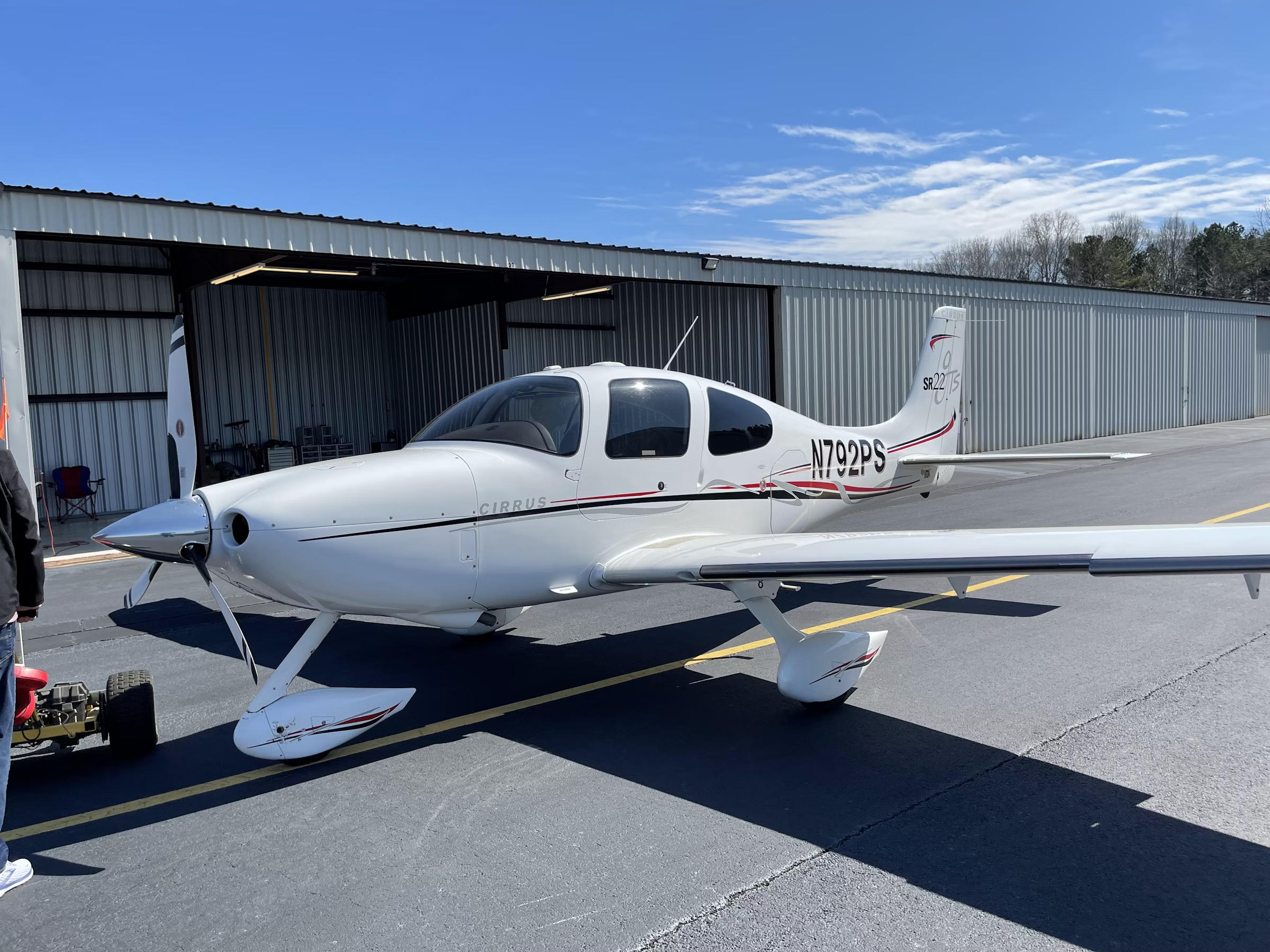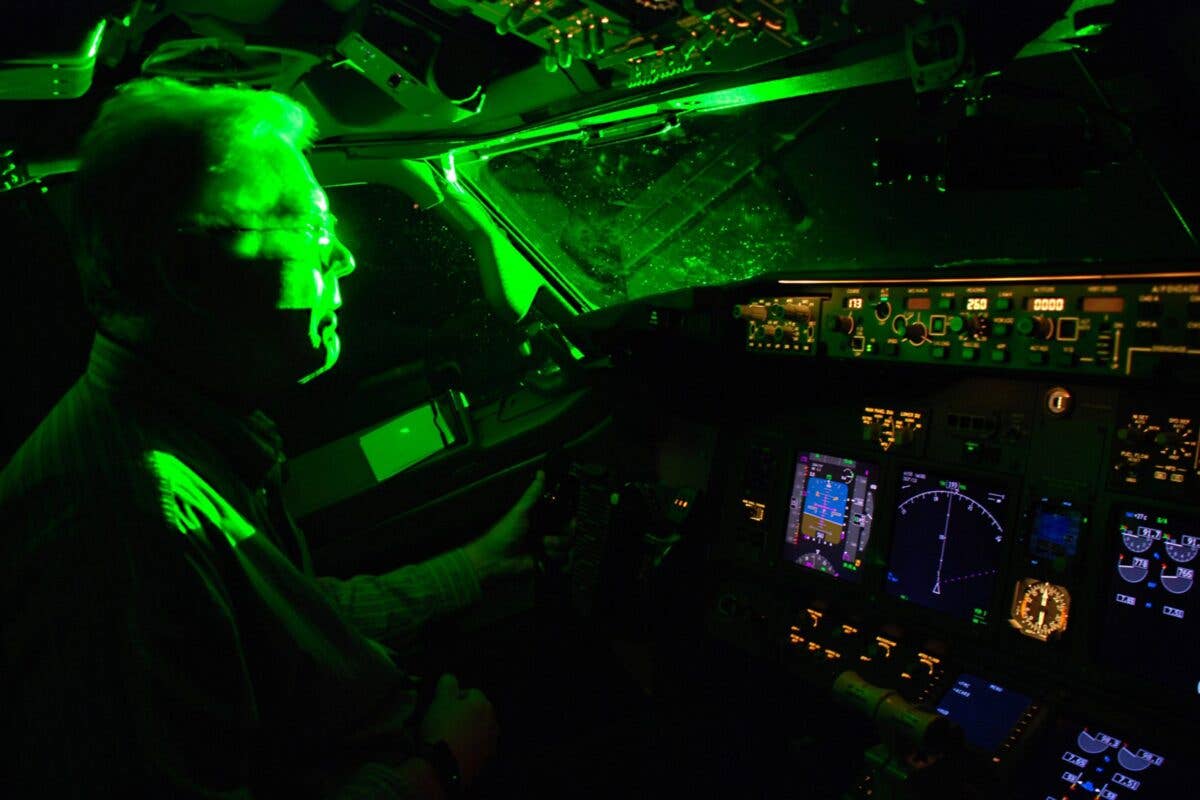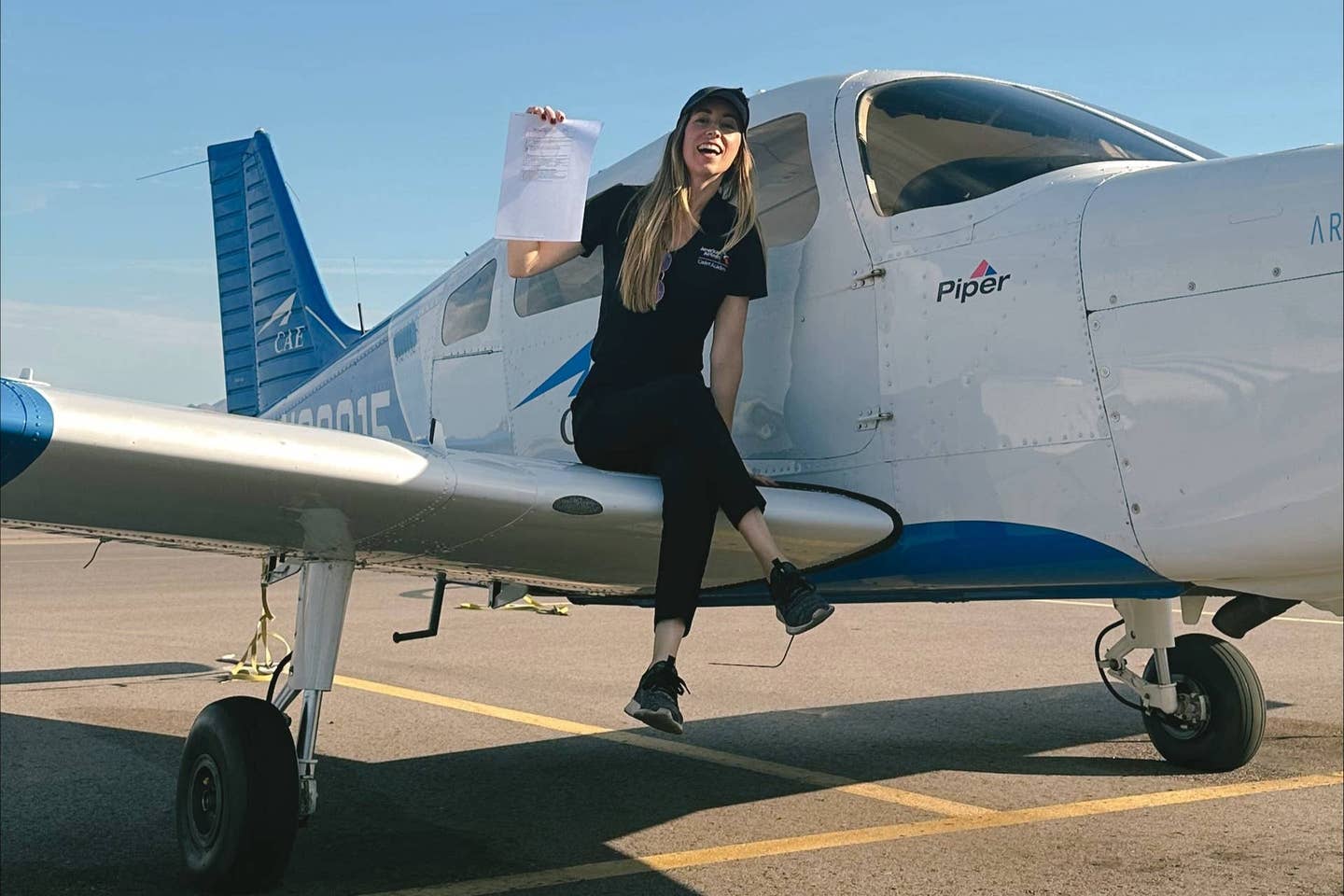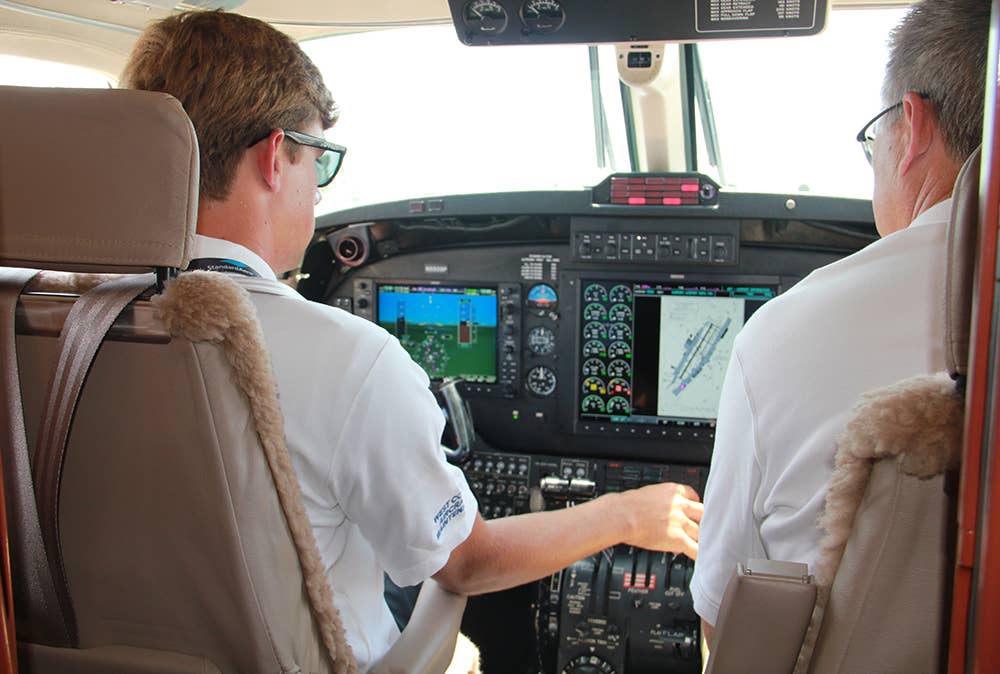Lessons from the Truckee NTSB Case Study
The only good thing to come out of aviation accidents, be they large or small, is that we can often learn from the mistakes of others.

The airplane’s downwind leg and allowed circling radius. [Courtesy: NTSB]
The only good thing to come out of aviation accidents, be they large or small, is that we can often learn from the mistakes of others. I adopted this mindset years ago when I was tasked with writing up accident reports from the National Transportation Safety Board (NTSB). In hindsight, the mistakes can be glaring, leaping off the page. How to mitigate the risks and the failures that led to the event takes a little more thought.
The NTSB recently released a video of a panel discussion about the 2021 accident involving a Challenger 605 attempting a circle to land approach at Truckee-Tahoe Airport (KTRK), in Truckee, California, that resulted in the deaths of the flight crew, six passengers, and two dogs. The probable cause of the accident was released in August of this year and listed as a combination of an unstabilized approach and the flight crew's poor crew resource management and decision making. The panel discussion took the event apart step by step to identify the issues and suggest ways to mitigate these risks.
The panel was led by NTSB board member Michael Graham. The participants included Stephen Stein, NTSB senior accident investigator of the Truckee event, Richard Meikle, executive vice president for operations and safety at Flight Safety International, Scott Snow, head of training and performance at CAE Incorporated, and three Part 135 operators, Stephen Myers, executive vice president of Elite Jets, Jeff Baum, founder and CEO of Wisconsin Aviation, and Patrick McGuire, representing commercial and business aviation safety management.
The discussion began with a review of the accident, which took place on July 26, 2021. The accident occurred in the daytime, but visibility was somewhat compromised as there was smoke in the air because of forest fires.
Per the 26-page NTSB report, the captain and first officer were flying a Part 135 flight fromCoeur d'Alene, Idaho, to Truckee. According to Stein, the captain was employed by Aeolus Air Charter, Inc. a Part 135 operator. The first officer was a contract pilot hired through a website. The captain had recently undergone recurrency training with the employer. It was noted that the first officer had not undergone this company training, and it was the first time they had flown together. There were references to the FO helping the captain with programming the flight management system.
According to Airnav.com, the airport elevation is 5,904 feet and the airport has two runways: Runway 11/29, measuring 7,001 by100 feet, and Runway 2/20, measuring 4,654 by 75 feet.
The cockpit voice recorder captured the flight, the crew discussing and briefing the straight-in approach to Runway 11. The NTSB report notes that most of the flight was uneventful until descent, when air traffic control told the flight crew to expect the RNAV GPS approach for Runway 20.
The captain was pilot flying and the FO was pilot monitoring the flight. Both determined that Runway 20 was too short for Challenger at its expected landing weight. The report states "Instead of making a request to ATC for the straight-in approach to Runway 11 (the longer runway), the captain told the FO they could take the Runway 20 approach and circle to land on Runway 11, and the FO relayed this information to ATC. ATC approved, and the flight crew accepted the circle-to-land approach."
Although the descent checklist required that the flight crew brief the new circle-to-land approach, as the flight crew’s acceptance of the new approach invalidated the previous straight-in approach brief, the crew failed to brief the new approach.
The situation deteriorated from there as both the pilot and copilot were behind the airplane until it stalled short of the runway and off the centerline, resulting in a fireball that was caught on a hotel security camera.
"Briefing the approach gives you a chance to get a shared mental model between the flight crew members," said Stein, noting that the FO at one point asked how they were going to get down from 15,000 feet to 12,000 feet in 2 nautical miles, adding that the aircraft was at 250 knots, which was too fast as they needed to be below 230 knots for the circle to land.
It was noted that ATC instructed the flight crew to hold, but "the captain was slow in complying with this instruction, so the FO started the turn to enter the holding pattern and then informed ATC once they were established in the hold."
Approximately 20 seconds later, ATC cleared them for the approach. Before the FO confirmed the clearance with ATC, he asked the captain if he was ready for the approach, and the captain stated that he was. However, the aircraft was still too fast. The FO suggested a 360 degree turn to the captain, but the captain never acknowledged the excessive airspeed and did not turn.
The FO continued to coach the captain. Upon visual identification of the airport, the FO instructed the captain to make a turn 90 degrees to the right to put the airplane on an approximate heading of 290 degrees, which would put the aircraft parallel to Runway 11. According to the NTSB, this was consistent with the manufacturer’s operating manual procedures for the downwind leg of the circling approach.
However, the FO instructed the captain to roll out of the turn prematurely, and the captain stopped the turn on a heading of about 233 degrees which resulted in the aircraft on a 57 degree angle left of the downwind course parallel with Runway 11 and what the NTSB described as "an unnecessarily tight turning radius."
When the aircraft began the turn to final, the airplane was still about 1.3 nm from the maximum circling radius that was established for the airplane’s approach category.The break down in cockpit communication and command structure continued, as the FO deployed 45 degrees of flaps after confirming with the captain although the manufacturer’s operating manual procedures for the downwind leg called for a flap setting of 30 degrees.
The aircraft was at 162 knots, approximately 44 knots above the landing speed of 118 knots that the crew had calculated and planned on earlier in the flight. The FO addressed this by telling the captain, “I’m gonna get your speed under control for you.”
Investigators noted that at this point it appeared as though the throttles were reduced as the engine fan speeds (N1) began to decrease from about 88 percent to about 28 percent. As the aircraft slowed, the FO repeatedly attempted to point out the airport to the captain, who appeared to be having difficulty seeing the runway – possibly due to the wildfire smoke in the area.
The FO continued to coach and reassure the captain through the circle-to-land until they entered the base leg when the FO repeatedly asked for control of the aircraft. There was no verbalized positive exchange of controls.
The jet crossed the extended centerline in a left bank and the FO remarked they were still too high. At this point one of the pilots fully deployed the flight spoilers, which increased the airplane's sink rate. The airspeed now dropped to 135 knots, which was 17 knots above the Vref speed based on what the NTSB called "the erroneous basic operating weight programmed into the airplane’s flight management system.
The bank angle increased and the stall protection system (SPS) stick shaker and stick pusher engaged. The captain asked the FO, “What are you doing?" and the FO repeatedly asked the captain to let him have the airplane. The stick shaker and stick pusher briefly disengaged, then engaged again as the aircraft entered a rapid roll to the left consistent with a left wing stall resulting in an impact with terrain and post crash fire.
Failure to Brief
As noted in the panel discussion, the issues began with the crew's failure to brief the circling approach. Although the FO repeatedly pointed out the aircraft was too high and too fast, the captain did not act upon this information. Because the aircraft was too fast, they did not have the time to configure the airplane and make corrections, thus reducing the safety margin.
As noted in the report, "The circling approach maneuver began at 160 kts, which was 20 kts higher than the upper limit of the circle-to-land approach speed established for this airplane’s approach category (category C) and did not drop below the category C maximum speed until the flight crew was preparing to start their base leg turn.”
It was suggested based on the conversations in the cockpit per the voice recorder that the crew did not recognize the severity of the situation and the FO was trying to salvage the approach, resulting in numerous preventable safety challenges.
What We Can Take Away From This
There are a number of lessons to be learned from this event. (Puts on flight instructor cap). For starters, be wary when flying with someone unfamiliar to you. At the airline level, pilots undergo the same training so, in theory, they understand what is expected of them during the flight and know how to work together as a crew. The role of crew members and communication of expectations have been taught and rehearsed in the simulator.
The panelists noted that when an individual undergoing training has difficulties in any of these areas, they are counseled and retrained—or removed, if the situation warrants it.
The standards of performance need to be respected and enforced, starting at the flight school level, and before each flight the CFI needs to verbalize expectations with the learner. Sadly, this often doesn't happen because the CFI is there for their hours, not necessarily to teach—that one-off flight adds to their logbook, and the learner becomes "someone else's problem" when the instructor moves on. This must not continue. Some CFIs are reluctant to address the learner's shortcomings for fear of hurting their feelings or losing a client. If you choose your words carefully, you can help the client. Lying to them about their performance or using vague language like "You did okay" doesn't help anyone one, and sets them up for a larger failure down the road.
If the instructor introduces the airman certification standards at the beginning of the lesson with the caveat "these are the minimum standards," it puts in place the metrics for success.
The instructors must make sure the learners understand that these standards and that these metrics are established by the FAA, not the instructor or the flight school—and they are non negotiable.
CRM Training Should Begin Early
The concept of crew resource management (CRM) is a concept introduced in ground school but often not discussed or practiced in the cockpit. This can be addressed once the learner is taught how to use the checklist and perform a passenger briefing.Their job is to fly and if they need the instructor's assistance or the instructor has to take the controls, that needs to be verbalized with the phrase "my airplane, I have the controls" or "you have the controls" and a positive exchange taking place.
The learner needs to listen to the CFI—and here's where it gets tricky. If the learner ignores the CFI or locks up on the controls, refusing to let go, the CFIs need to do whatever it takes to get them to release.
This is a delicate area, especially when the learner is larger and physically stronger than the CFI. There may be some learners the CFI refuses to fly with because of this. While most CFIs don't get into the cockpit with the idea they are going to physically assault the person next to them, I recall the words of my first CFI, a retired police officer who told me, "It is better to talk to twelve than be carried by six," meaning it is better to have to explain yourself in a court of law than be buried because a learner killed you both in an accident. You do what you have to do, and hope you live to tell the story.
Use the Checklists, Brief the Approaches
The appropriate use of the checklist and a verbal briefing of the approaches should be taught and practiced from day one. When the private pilot candidate is in level flight in the practice area with the CFI at the side, the cruise flight and pre-maneuver checklist should be verbalized.
Before leaving the practice area to return to the airport, the pre-landing and approach checklist with a review of entry into the pattern including appropriate aircraft configuration, altitudes and airspeeds should be reviewed. Far too many private pilots do not follow these procedures, resulting in the “chop, drop, hope you stop (before running out of runway)” approach. Part of this review is a reminder of the sterile cockpit rule before entering the pattern, because this is a task-intensive part of the flight.
In the Truckee accident the copilot was reluctant to assert control when it was obvious that the captain was behind the airplane—for example, when the aircraft was too fast. It is understandable that you don't want to create conflict in the cockpit, or possibly lose your job, but let's look at the bigger picture: would you rather talk to twelve or be carried by six?

Sign-up for newsletters & special offers!
Get the latest FLYING stories & special offers delivered directly to your inbox

